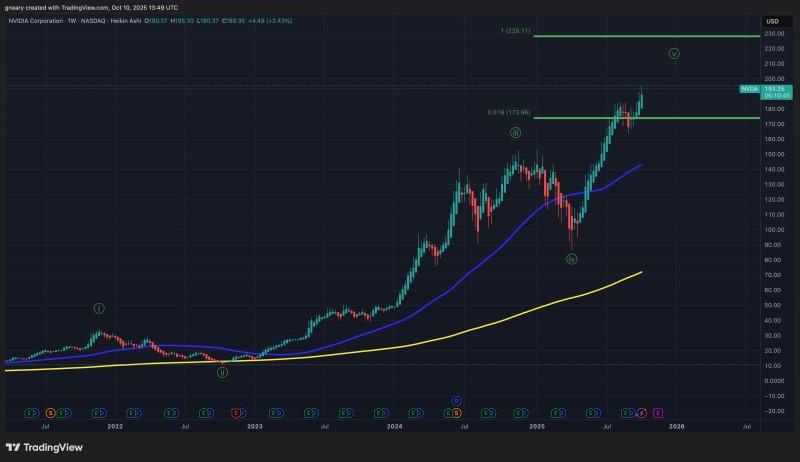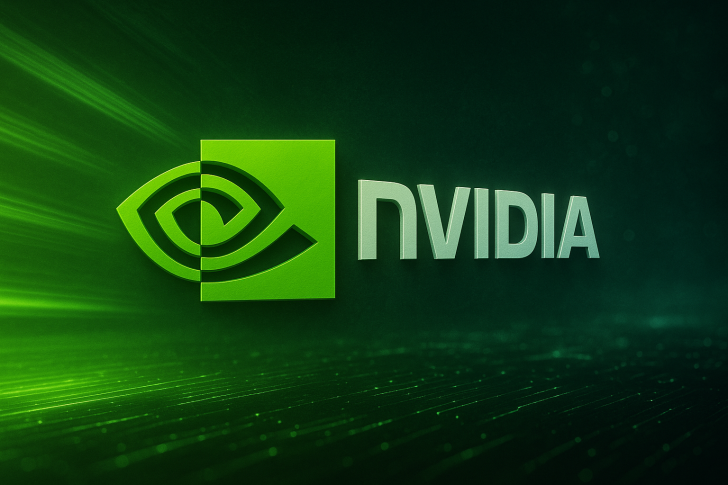Nvidia continues to dominate investor attention as technical indicators point toward additional gains before an anticipated market pullback. Recent Elliott Wave analysis suggests the stock is building momentum in its fifth wave, with projections extending well above current levels before a correction takes hold.
Technical Picture
Analyst The Long Investor recently noted that Nvidia appears to be in Wave 5 of its Elliott Wave cycle, indicating there's likely more room to run. While a year-end rally looks probable, the analysis also cautions that once this rally concludes, a corrective move could ripple through Nvidia and the wider stock market.

The weekly chart shows Nvidia holding strong after breaking back above the $173.96 Fibonacci retracement level. The stock has pushed to fresh local highs around $193, and bullish momentum hasn't let up. The next meaningful target sits at $228, based on typical Wave 5 extension patterns.
Several factors support continued strength: the price is trading comfortably above both the 50-day and 200-day moving averages, pointing to solid institutional backing. Nvidia's commanding position in AI infrastructure, data centers, and graphics processing keeps drawing investor interest. Breaking through previous resistance zones has brought fresh energy to the bullish case heading into year-end.
Market Implications
Nvidia has evolved beyond just another tech stock—it's become the measuring stick for the AI revolution. Traders and analysts often look at Nvidia's chart as a gauge for risk appetite across growth and technology sectors. If Wave 5 pushes toward that $228 mark, it would likely reinforce confidence in equities through the end of 2025.
That said, Elliott Wave theory points to an ABC correction following the completion of Wave 5. When that shift happens, it could weigh not just on Nvidia but on major indices as well.
Right now, Nvidia's uptrend looks intact with clear targets north of $220. The company's leadership in artificial intelligence ensures it will stay front and center in portfolio decisions. But it's worth remembering that stronger rallies often lead to sharper pullbacks—so while the upside may be compelling, the eventual downside could be just as pronounced.
 Usman Salis
Usman Salis

 Usman Salis
Usman Salis


